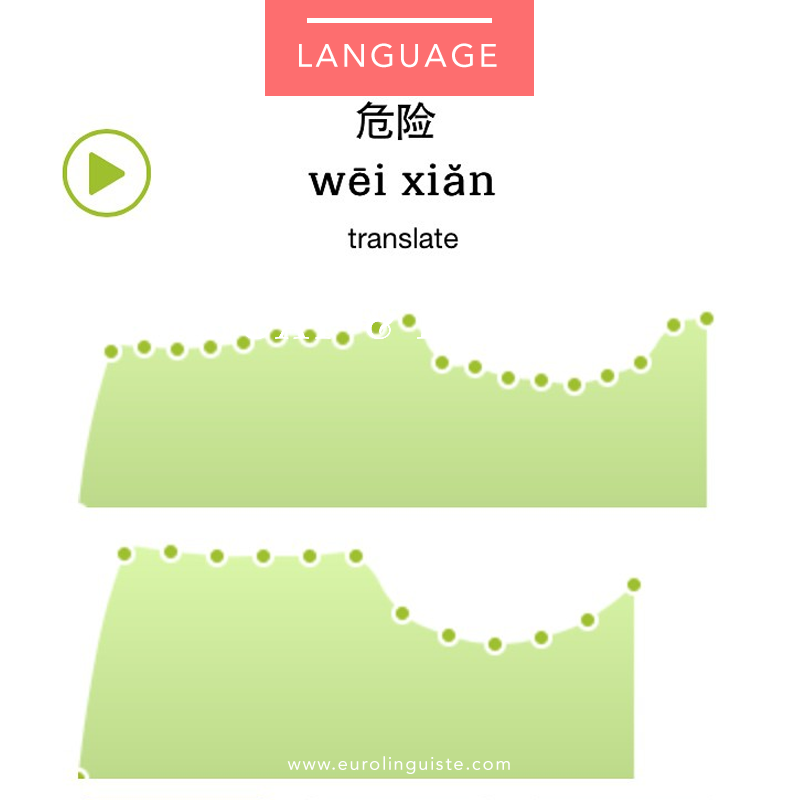Learning Tones with WaiChinese | A Review

My name is Shannon Kennedy and I'm the language lover,…
In my opinion, tones are one of the (if not the) most difficult aspect of learning Mandarin Chinese. Even after close to a year of study, they are still something that I struggle with as a language learner.
Without a private teacher or language exchange partners (who sometimes let your pronunciation slide), there’s really no good way of knowing whether or not you’re correctly pronouncing the tones.
For all you know, you could be telling someone that you want your kids to brush a Chinese guy, rather than telling them that you want them to speak Chinese (Yes, I admit it, that was me. I was horrified.).
It was frustrating, having to speak at a pace so slow that I’d forget what I wanted to say before arriving at the end of a sentence. It was embarrassing.
Working on tones through slow and deliberate reading, or combing through tone-pair charts was both boring and demotivating. Focusing on my tones easily became the most dreaded part of my Chinese study.
That is, of course, until I stumbled across WaiChinese.
WaiChinese
I started using WaiChinese because I have a habit of at least trying out almost every new language learning method or application I stumble across. Most don’t stick because they don’t work for me personally, but WaiChinese did.
When I first signed up with WaiChinese, I didn’t quite realize just what I was getting into. For me, it was simple, I saw that it was a way to improve my tones (something I really needed to do) and thought it would be worth experimenting with.
I would soon find out that it was so much more.
After visiting the WaiChinese website, I created my account, took a quick look at the dashboard on my desktop and decided to try out once I was able to download the mobile app when I got home later that day.
But then I received an email from my “coach.”
I was a bit confused at first – was this an automated message? I supposed it was something like most membership based language learning tools send new users. Just another welcome message. As I read through it, however, I realized that my coach was, in fact, a real person who had taken the time to look me up and made a point to mention our shared interests.
What?!
It seemed too good to be true. A real-life coach assigned to help me improve my pronunciation of tones?
I was immediately intrigued and decided to download the app right away rather than wait until a later point.
Upon exploring, I discovered more about what the app had to offer and I was more than pleasantly surprised.
Here’s what you get with your WaiChinese account:
- Voice recognition technology that allows you to see a visual graph of your pronunciation
- Evaluations from real-life teachers
- Speech evaluation reports
- Tons of vocabulary and sentences to practice with
- Example recordings of each word or phrase from native speakers
- Grades within 24 hours
- Premium accounts get custom lessons
How WaiChinese Works
When you sign into your account, you’re given a choice of courses assigned to you by your teacher/coach. I requested HSK based vocabulary and sentences, and my teacher assigned basic tone pairs and chengyu (idiomatic) expressions to me as well. It gave me plenty to work with for a few days, and once I completed what was assigned to me, my teacher challenged me with more content.

Once you open up a lesson, you have the opportunity to listen to the words or phrases spoken by a native speaker before trying it out on your own. If you mess up, you can record again before submitting the lesson to your teacher.
You can also listen back to your recording and compare it to that of the native speaker reading the example. Many of the lessons also have male/female versions of the recordings so that you can familiarize yourself with hearing the words pronounced by different speakers before recording your submissions.
You are shown both the Chinese characters and the pinyin for each assignment, and you’re also given the option of seeing the translation if you’re unfamiliar with the word or phrase.
After submitting your recordings, you only have to wait 24-48 hours to get feedback from your teacher! I receive both an email from my teacher with personalized and specific advice for improving my pronunciation, and as you can see below, scores (on a scale of 1-5) within the app.
Once you’ve submitted your recording and it’s been graded, you can redo any of your previous lessons until you’re happy with the results.

The assignments range in complexity with everything from individual sounds to full sentences. And as I mentioned above, with either the “Accelerate” or “Super Student” accounts, you can even get customized vocabulary sets. As you can see, the sentences use both useful vocabulary and grow in complexity based on your level and the lessons your teacher assigns you.

My two favorite features are definitely 1) the graph and 2) the emails from my teacher. I find that being able visualize my pronunciation with the graph feature has helped me improve as much as the corrections from my teacher have.
I can actually see where I’m making mistakes, rather than try to listen for them. This feature is extremely beneficial when your ear isn’t quite trained enough to pick out the sometimes subtle difference between incorrect and correct pronunciations. (Subtle to a listener new to the language. To someone who has studied Mandarin for some time or is fluent in the language, the difference isn’t as difficult to pick out.)
Ways I Think the App Could Improve
Although I found the app extremely helpful, there are a couple things I think that they could do to improve its usability and boost its chances of becoming a “must-have” for any and every Mandarin language learner.
The first would be the a feature that allows the student to download a PDF copy (or excel sheet) of the vocabulary they’re working on for future reference. I would love to have access to the written, pinyin and English translations of the expressions I’ve been learning to continue to study beyond pronunciation and outside of WaiChinese.
Or, upon clicking the “translate” button, the option of adding it to a flashcard deck (either within or outside of the WaiChinese app) for further study would be incredible. If the words in your flashcard deck could be exported for printing or saving outside of WaiChinese, that would be even better!
*Update: I spoke with Kyle over at WaiChinese and they said a flashcards feature is definitely on their list of things to add to the app.
The second would be a way for users to see what lessons they’ve already recorded. This feature is available once the teacher has graded the lessons, but until then, there is no way for the student to see what they’ve already submitted. For someone who might open the app up a few times a day to work on pronunciation (like me!) rather than in one sitting, this would be a great feature. Especially for the lessons that have some twenty-odd words or phrases.
Great Communication
I was incredibly surprised by the dedication and the response from those behind the scenes at WaiChinese. Syd, the founder, replied to the emails that sent to him and the teachers always get back to you with any questions you have – like adding new lessons – rather quickly.
I was really impressed by their desire to interact with customers to continue to improve and develop WaiChinese. It’s really great having a company that takes your feedback into consideration, looking to ensure that their product is something that truly fulfills the needs of those using it.
I definitely look forward to seeing how WaiChinese continues to evolve.
Article update: It seems WaiChinese is no longer available.
Have you used WaiChinese? What was your experience with the app? Have you found any other good ways to work on Chinese tones? I’d love to hear your answers to these questions in the comments!
My name is Shannon Kennedy and I'm the language lover, traveler, and foodie behind Eurolinguiste. I'm also the Head Coach of the Fluent in 3 Months Bootcamp, co-founder of Women in Language, and former Resident Polyglot at Drops.



